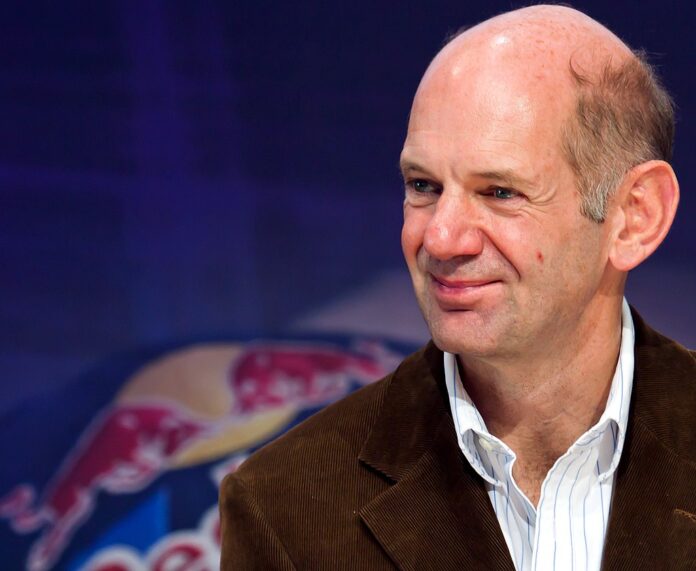Formula 1’s most acclaimed designer commits to a five-year contract with Aston Martin, set to start in March 2025
In a high-profile move that promises to reshape the Formula 1 landscape, renowned designer Adrian Newey is set to join Aston Martin on a lucrative five-year contract valued at up to £30 million per year, including bonuses and add-ons. The deal will be formally announced at a press conference hosted by Aston Martin at their F1 headquarters in Silverstone this coming Tuesday.
Newey, celebrated as one of the most influential figures in F1 design, will transition from his role as Red Bull’s chief technical officer, a position he held until earlier this year. At 65, Newey has carved out an illustrious career, having led the design of cars that secured 12 drivers’ championships and 13 constructors’ titles across his tenures with Williams, McLaren, and Red Bull.
Embed from Getty ImagesThe move is particularly significant for Aston Martin, owned by Lawrence Stroll, who has invested heavily in the team’s infrastructure and talent. Stroll’s vision to elevate Aston Martin to world championship contention includes a new state-of-the-art factory equipped with a cutting-edge wind tunnel and a partnership with Honda as a works engine provider starting in 2026. The addition of Newey is seen as a pivotal step in this ambitious plan.
Newey’s departure from Red Bull, negotiated in April, allows him to join Aston Martin in March 2025. This timing is strategic, enabling Newey to influence the design of the team’s 2026 car, a season marked by new regulations. Formula 1 rules prohibit teams from commencing aerodynamic design for the 2026 season before January 2025, positioning Newey to make an immediate impact.
In the interim, Aston Martin is bolstering its technical leadership with additional high-profile hires. Former Mercedes engine chief Andy Cowell will assume the role of CEO on October 1, and Enrico Cardile, formerly Ferrari’s chassis technical director, is set to join as chief technical officer at a later date in 2025. Current technical director Dan Fallows, who joined from Red Bull in 2022, will continue to work alongside Newey, drawing on his experience with Newey’s designs.
This move consolidates Aston Martin’s ambitions to build a formidable competitive presence in Formula 1, leveraging Newey’s unparalleled expertise to challenge the dominance of rival teams. As the team prepares for this transformation, Newey’s arrival marks a new chapter in Aston Martin’s F1 journey, promising a potential resurgence in their quest for championship glory.
Analysis:
Political:
The acquisition of Adrian Newey by Aston Martin highlights the intense competitive nature of Formula 1, where strategic moves and high-profile signings can have significant political ramifications. This move not only boosts Aston Martin’s stature but also underscores the shifting power dynamics within the sport. Lawrence Stroll’s substantial investment and the recruitment of Newey signal a clear political statement within F1, emphasizing the importance of leadership and innovation in achieving competitive success. This shift could influence other teams’ strategies and investment decisions as they respond to Aston Martin’s aggressive pursuit of excellence.
Social:
Socially, Newey’s move to Aston Martin reflects the high stakes and personal dynamics of professional sports. Newey, a legendary figure in F1, represents a symbol of engineering excellence and innovation. His transition from Red Bull to Aston Martin is a narrative that resonates with fans and industry professionals alike, illustrating the complex interplay between talent, career progression, and team ambitions. The story also highlights the human aspect of sports, where individual careers and decisions have far-reaching impacts on team fortunes and fan engagement.
Racial:
While the direct racial implications of Newey’s move are minimal, the broader context of diversity in Formula 1 remains relevant. Newey’s career has been marked by his achievements and innovations, regardless of race. However, his high-profile role at Aston Martin may indirectly influence discussions on diversity and representation within the sport, encouraging a more inclusive approach to team dynamics and leadership.
Gender:
Gender dynamics in F1, while not a central issue in Newey’s move, are part of the broader conversation about diversity in the sport. Newey’s influence as a leading designer contrasts with the ongoing efforts to increase female representation in technical roles and leadership positions within F1. The sport continues to evolve with initiatives aimed at fostering gender inclusivity, and the visibility of high-profile figures like Newey may contribute to broader discussions about opportunities for women in motorsport.
Economical:
Economically, Newey’s £30 million annual contract represents a significant investment for Aston Martin, reflecting the high value placed on top-tier technical expertise in Formula 1. This financial commitment highlights the economic stakes of competitive motorsport, where substantial investments are made to secure a competitive edge. The potential returns from Newey’s contribution could impact the team’s performance and profitability, influencing investor confidence and sponsorship opportunities. The broader economic implications also include the cost-benefit analysis of such high-profile signings and their potential to drive team success and financial growth.
